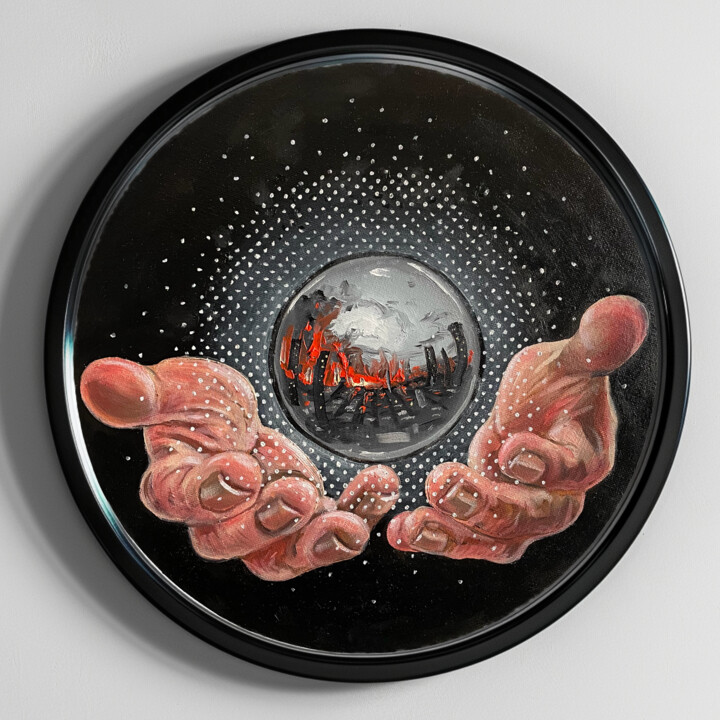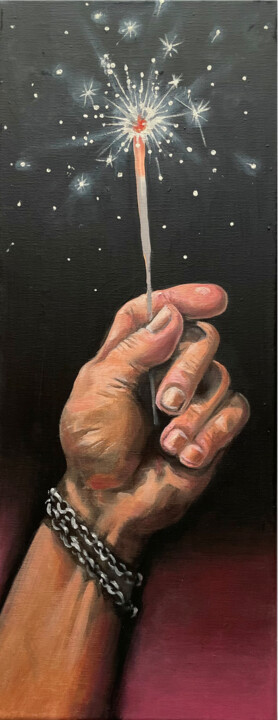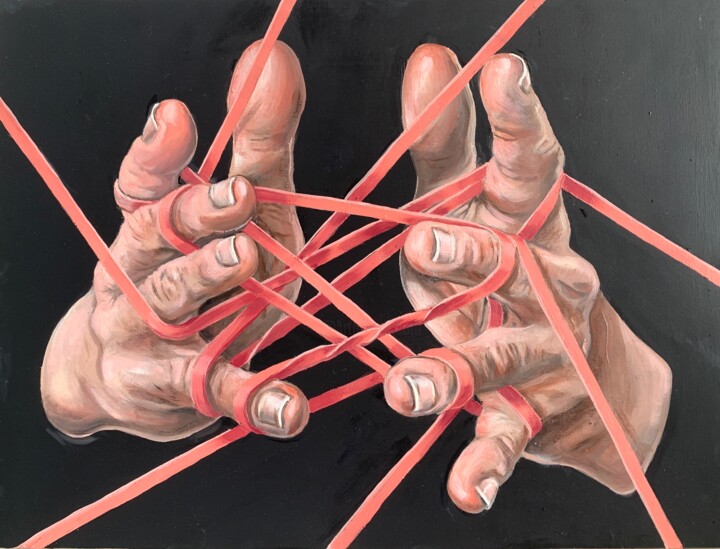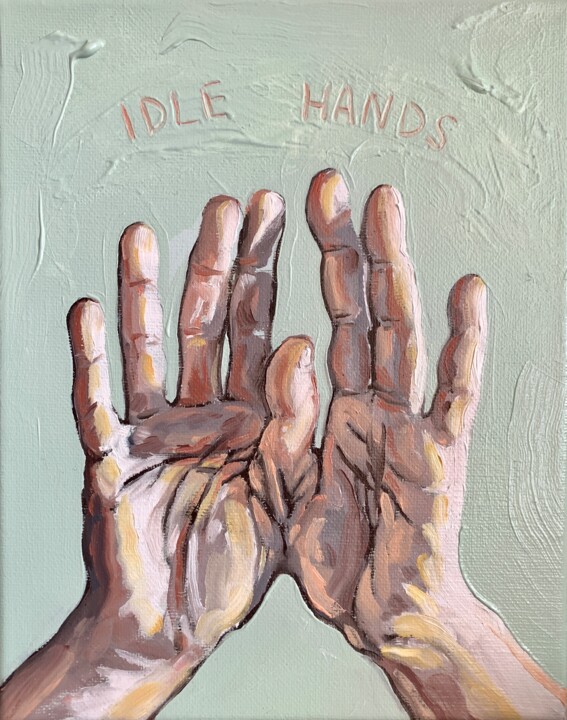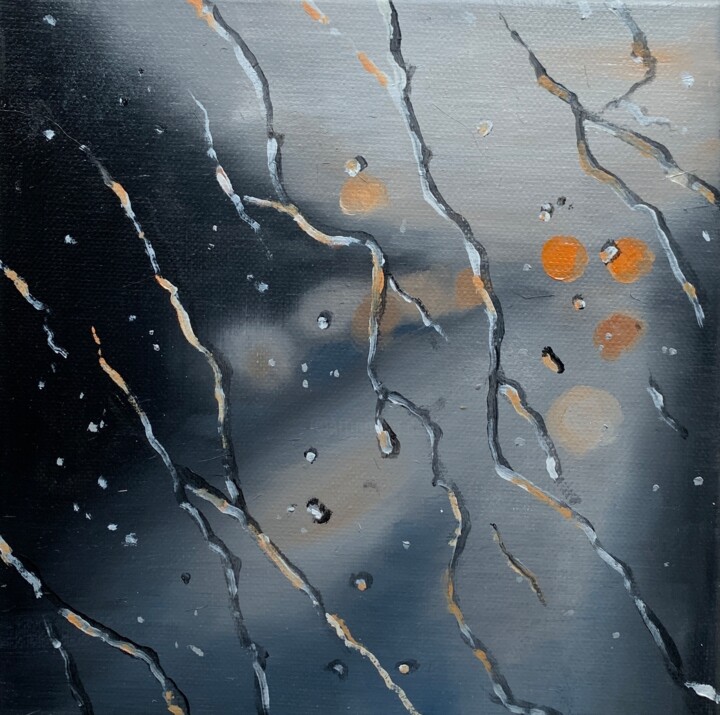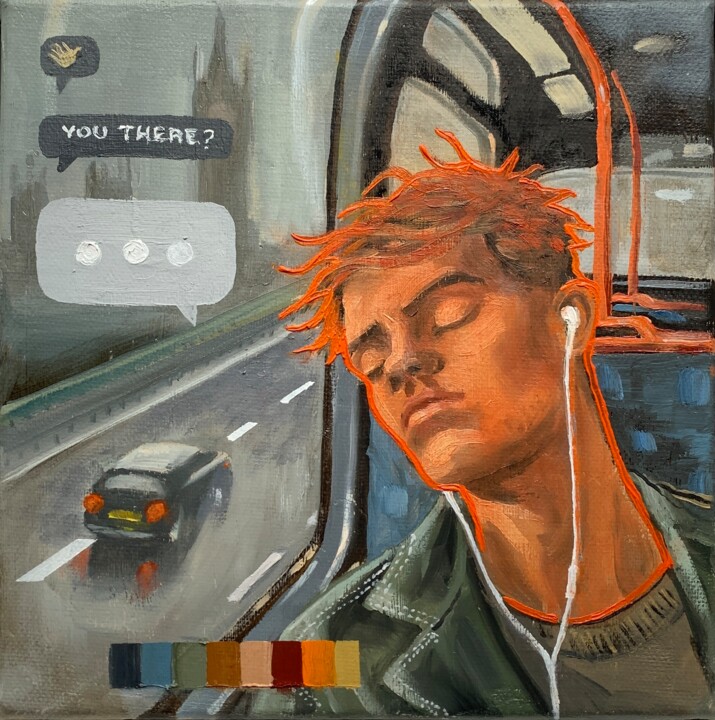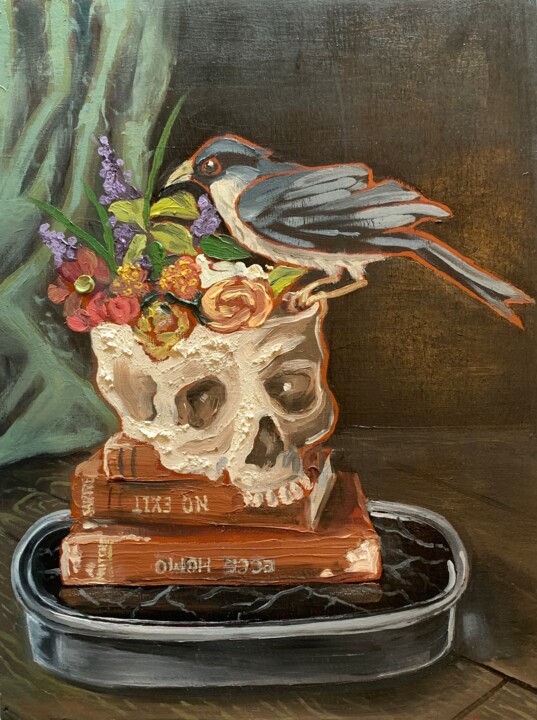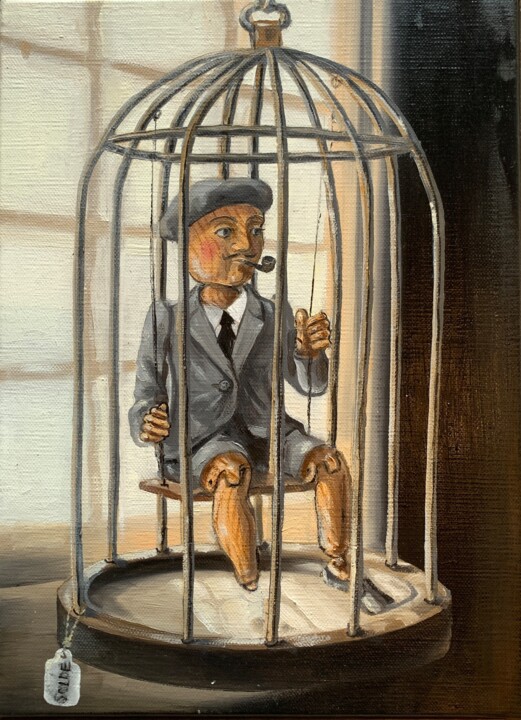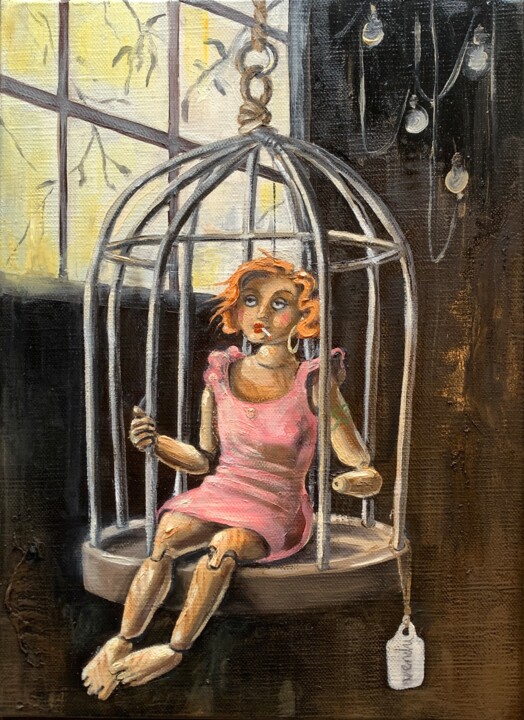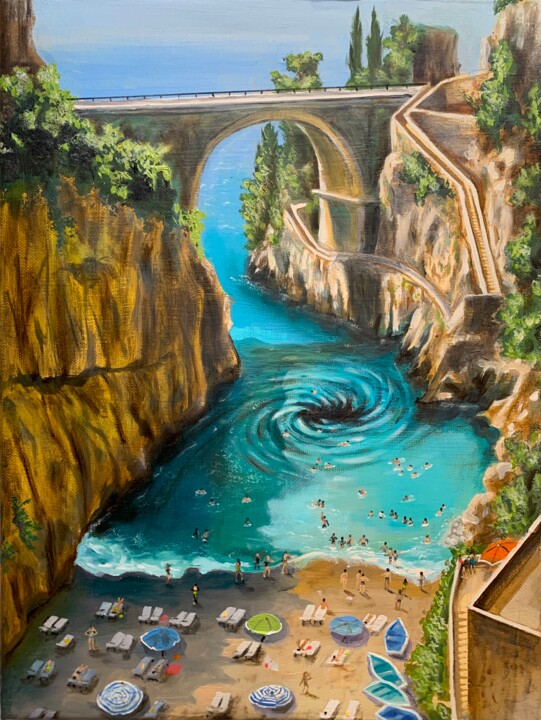What inspired you to create art and become an artist? (events, feelings, experiences...)
The urge to draw and paint came naturally at a very young age with my little paint set and I was always encouraged. I spontaneously documented moments, moods, and thoughts as a means to process events and still do that today.
What is your artistic background, techniques, and subjects you have experimented with so far?
My artistic background consists of oil paints, cold wax, sculpture, and newly introduced multimedia elements that meld all my interests into one.
Subjects have ranged from contemporary narratives to capturing overlooked moments and slightly surreal observations that border on magical realism.
What are the 3 aspects that differentiate you from other artists, making your work unique?
Aspects that make my work unique are:
I often combine figurative with abstract or digital touches.
If I cannot find source material, I work with AI, blender, or body form software to accurately produce my ideas and placement for lack of live models.
My work increasingly involves the fusing of paint and sculptural elements.
 Where does your inspiration come from?
Where does your inspiration come from?
My inspiration comes equally from the past (art history, masters, techniques), to the present (news, our digital world, collective mood), and possible futures ( new technology and climate changes).
What is your artistic approach? What visions, sensations or feelings do you want to evoke in the viewer?
In theory, my artistic approach is to evoke a state of mystery, riddle, and enough complexity to allow the viewer room to contemplate the work from their own perspective, reaching their own conclusion and finding something new to discover again and again.
What is the process of creating your works? Spontaneous or with a long preparatory process (technical, inspiration from art classics or other)?
The process of creation involves continual research and prep sketches that are filed under minor concepts and eventually built up into a series (big or small) that I might elaborate on at a later date. Some small works come spontaneously as I try and explore new techniques or materials, while large ones are accurately detailed in colour, form, application, structure, and placement and can take months before they are executed.
Do you use a particular work technique? if so, can you explain it?
My work technique involves processing moods or concepts as quick digital sketches and source photos. I move on to pencil sketches, rendering the scene with software for lighting, background, and an accurate colour palette.
Are there any innovative aspects in your work? Can you tell us which ones?
I believe working with technology has always gone hand in hand with art and the use of AI for creating very personal visions is a perfect vehicle, something that might have required endless visits to a library or hours searching the internet for source material. It is only a tool, as personal imagination and manual skills are still essential.
Do you have a format or medium that you are most comfortable with? if yes, why ?
Oil colours and clay are my standard mediums but am always searching for new supports, I find the tondo (round) frame often produces a fresh perspective when approaching contemporary subjects or perhaps futuristic Alupanel to a classic genre like still life. A fusion of past and present that is a conduit in my work.
Where do you produce your works? At home, in a shared workshop or in your own workshop? And in this space, how do you organize your creative work?
Although I have both shared and rented private studios in the past, I currently prefer to work in a home studio. The easy access to observe, modify, plan and work in a personal, private space devoid of distractions is an advantage. Eventually, sculpture will probably need to take over the garage and beyond...
Does your work lead you to travel to meet new collectors, for fairs or exhibitions? If so, what does it bring you?
This year will hopefully lead to breakouts at new fairs, collaborations, and exhibitions. I am currently interested in participating in SIAC Avignon.
How do you imagine the evolution of your work and your career as an artist in the future?
I would like to imagine my work expanding into new formats such as litho, metal sculpture, and large format pieces, working with art consultants, non-profits, and finding representation here in France and abroad.
What is the theme, style or technique of your latest artistic production?
The latest series is a sardonic take on the Cassandra complex, concerning contemporary issues in a restricted cool palette, freely fusing a mix of realism, abstraction, digital aesthetics, and sculpture. A light-hearted approach to weighty subjects.
Can you tell us about your most important exhibition experience?
My very first exhibit for the Lumière festival in Vancouver was an important revelation about just how universally appreciated art is, and the opportunity to freely meet artists and the general public was truly special.
If you could have created a famous work in the history of art, which one would you choose? And why ?
Without a doubt, I would have to choose “The raft of the Medusa” by Théodore Géricault. It's the quintessential painting incorporating all I aspire to:
Dark, dramatic, contemporary narrative, historical, colossal, mysterious, allegorical, dynamic composition, and impressively painted. With Delacroix as one of the characters! It really draws you in and doesn’t let go.
If you could invite one famous artist (dead or alive) to dinner, who would it be? How would you suggest he spend the evening?
The ultimate dinner would be with Michelangelo Merisi (Caravaggio). It would have to be dramatically candlelit with a roaring fireplace, a monastery table laid out with a bacchanalian smorgasbord of food and wine, where I’d delve into his inspirations, process, and rogue life stories. Although I think I’d probably bring along pepper spray just in case…






 Olimpia Gaia Martinelli
Olimpia Gaia Martinelli

